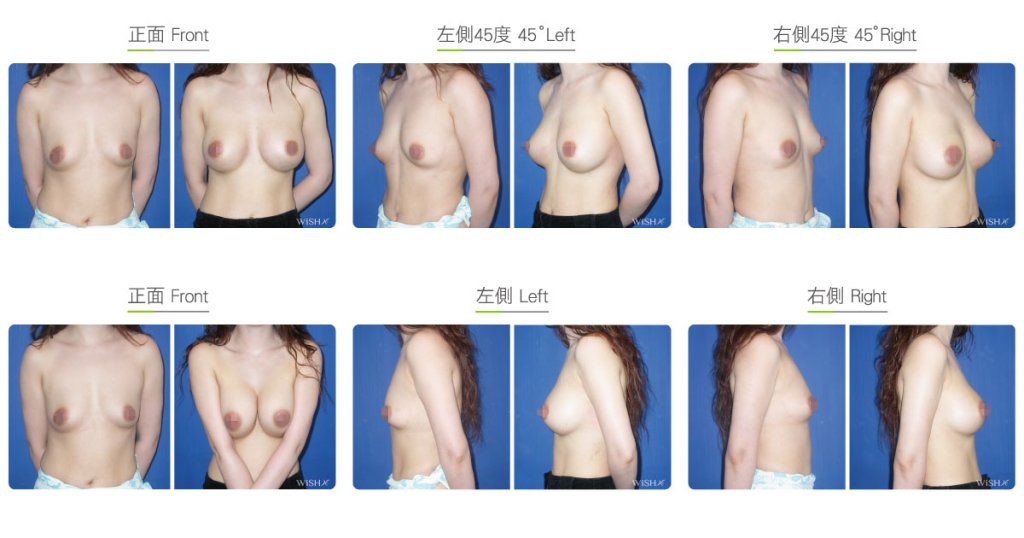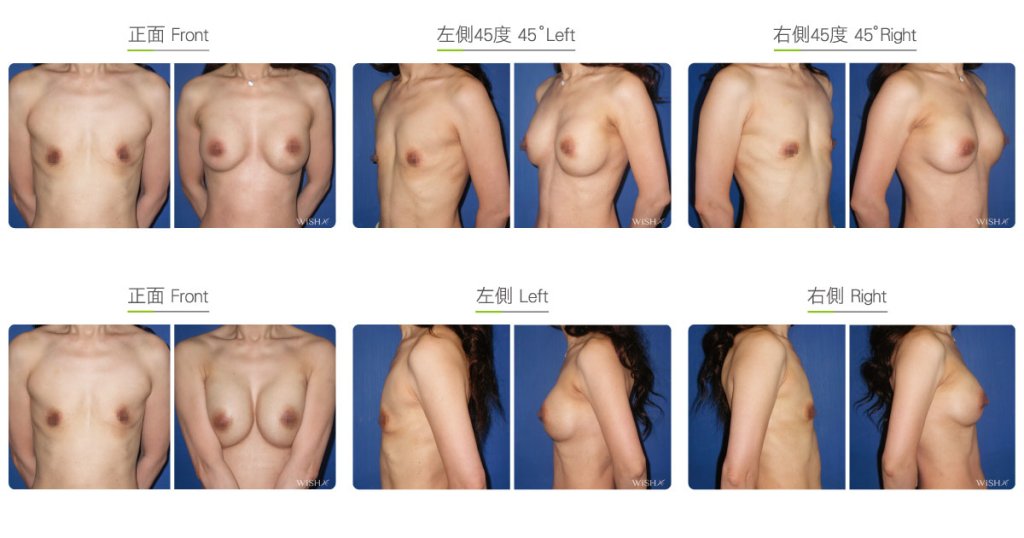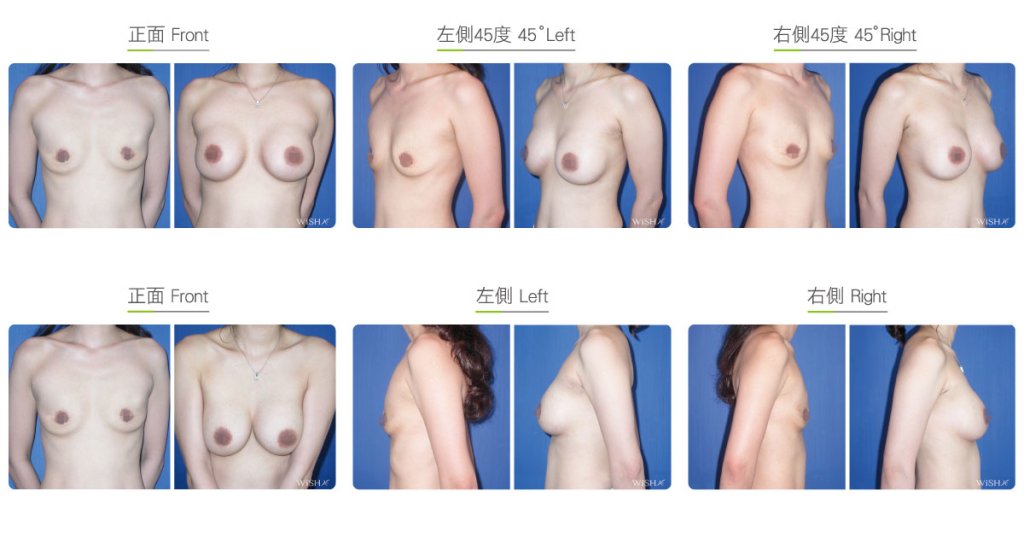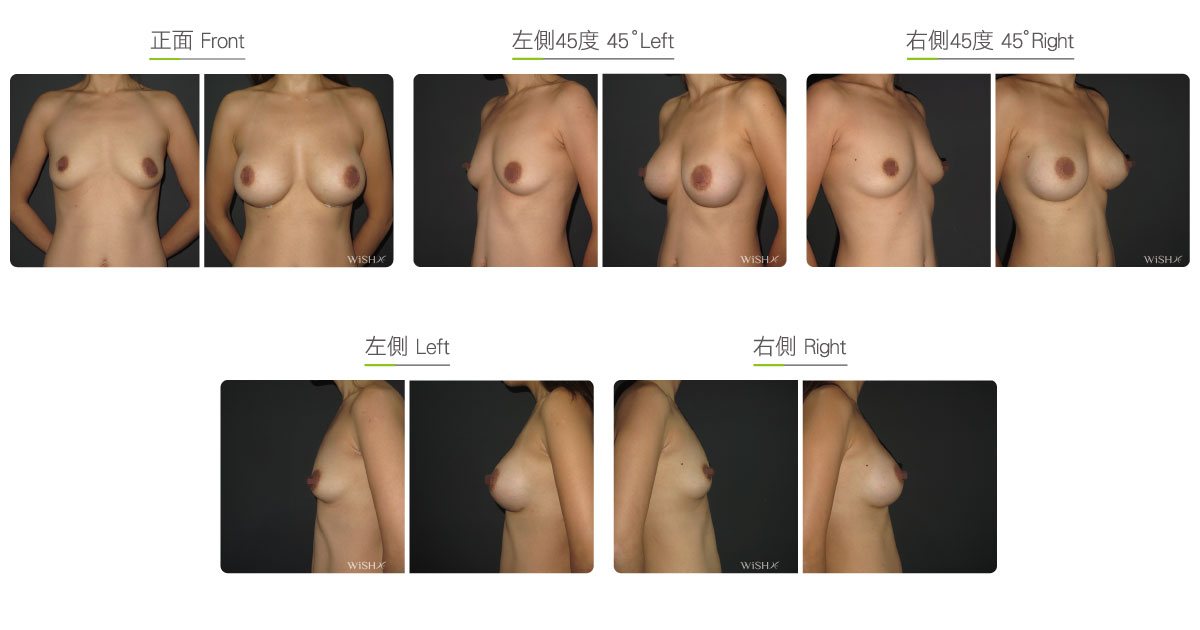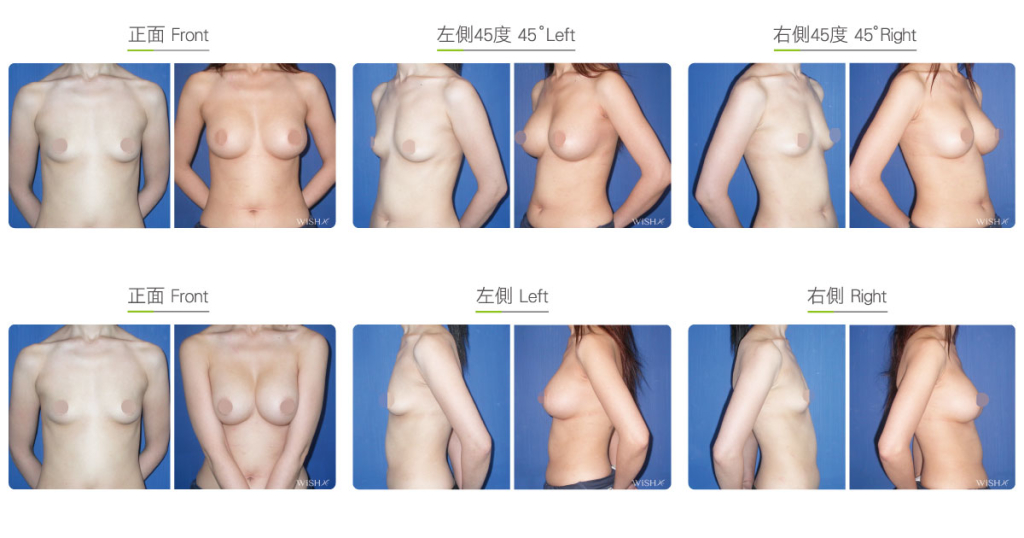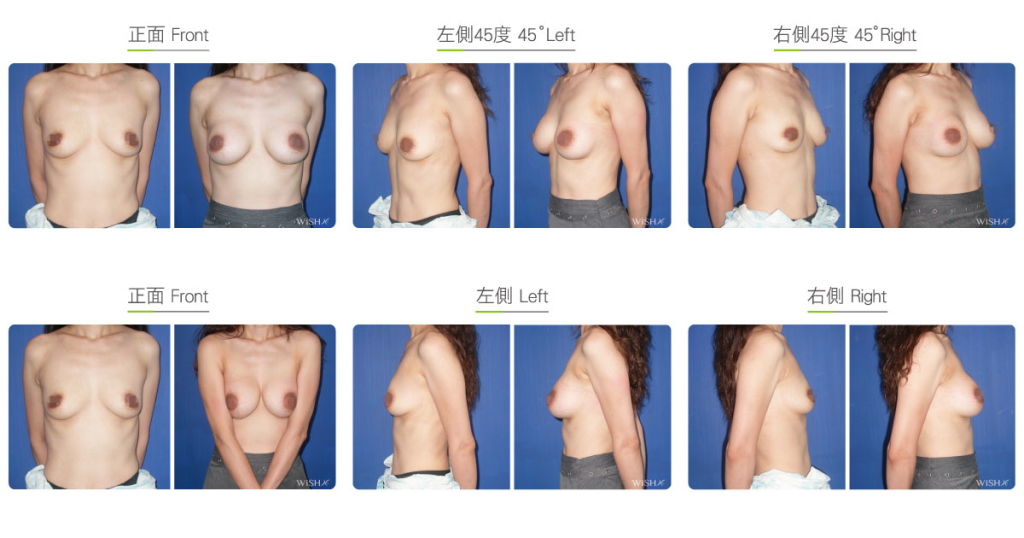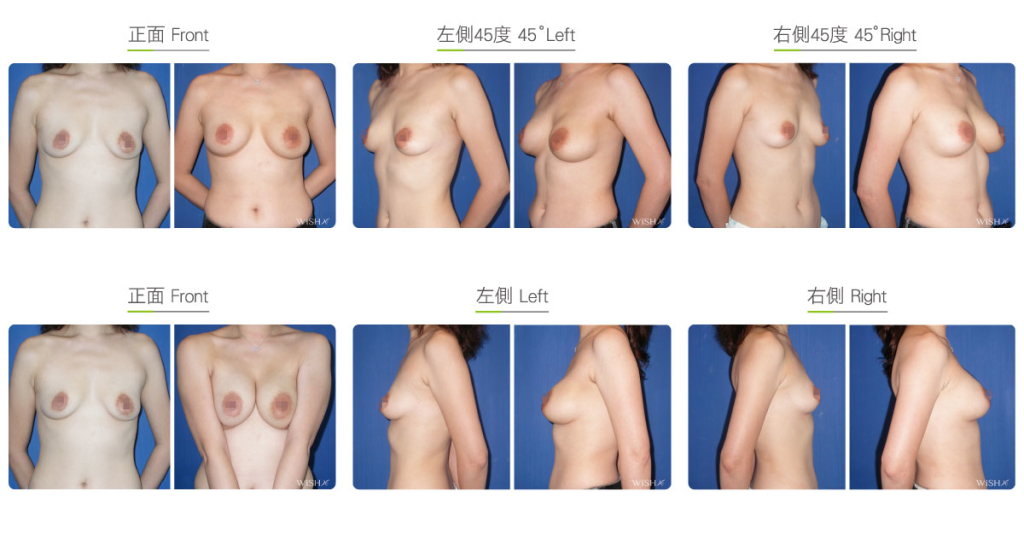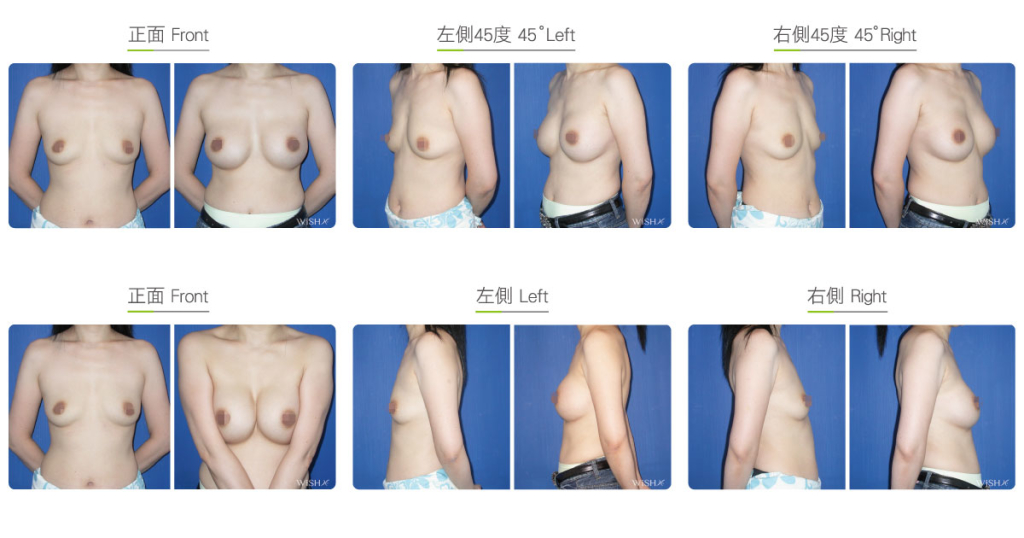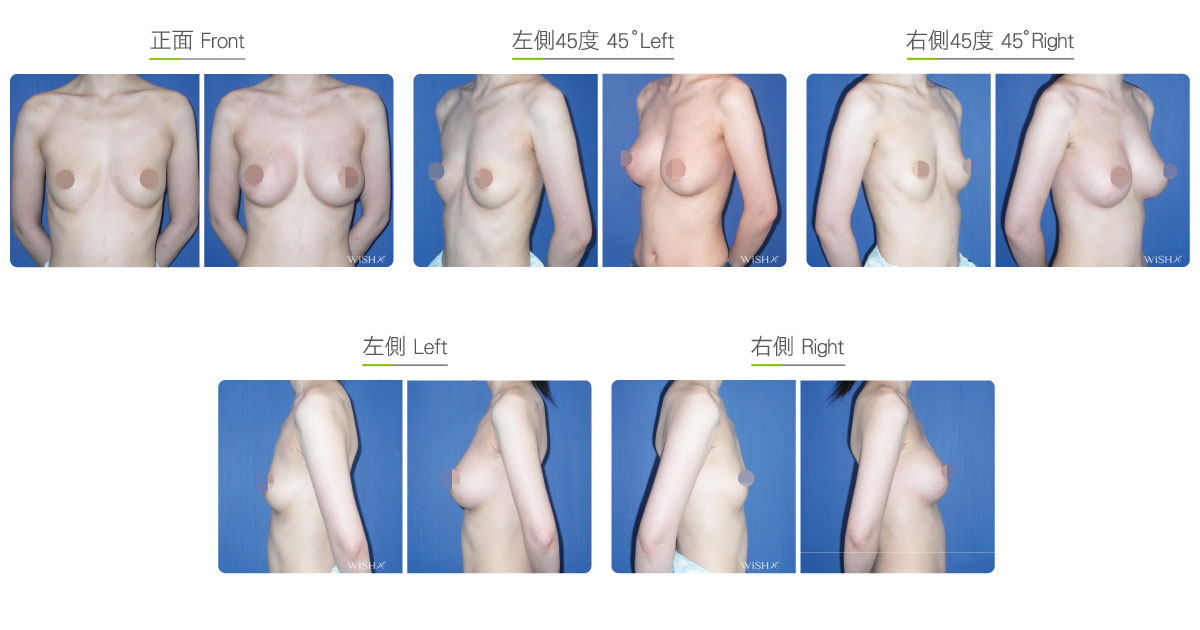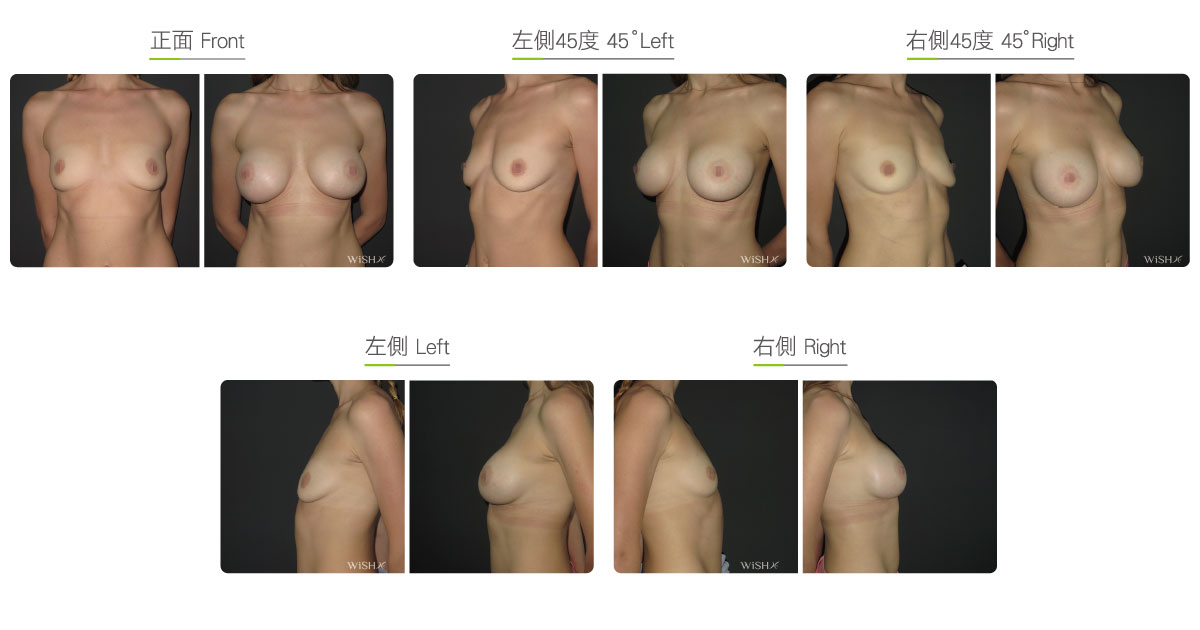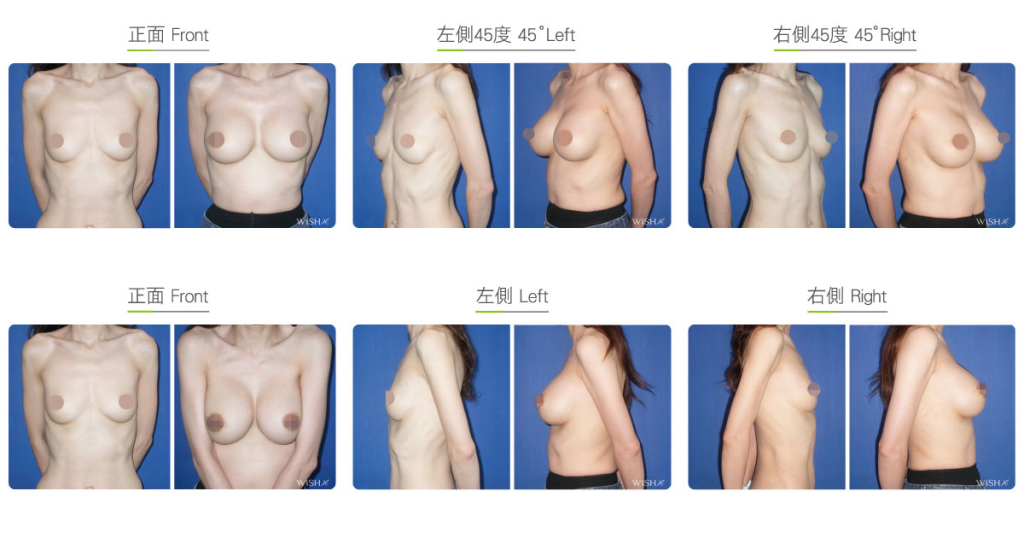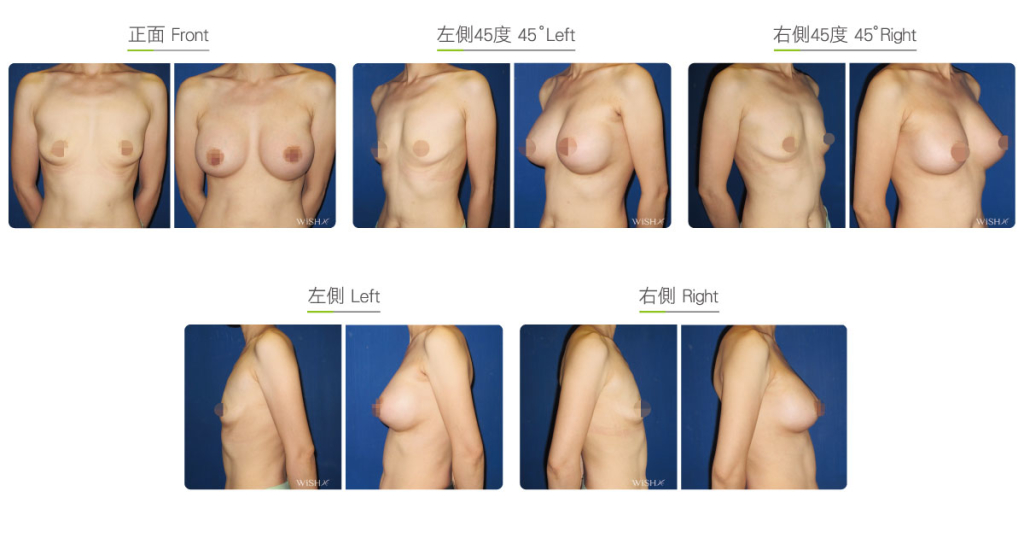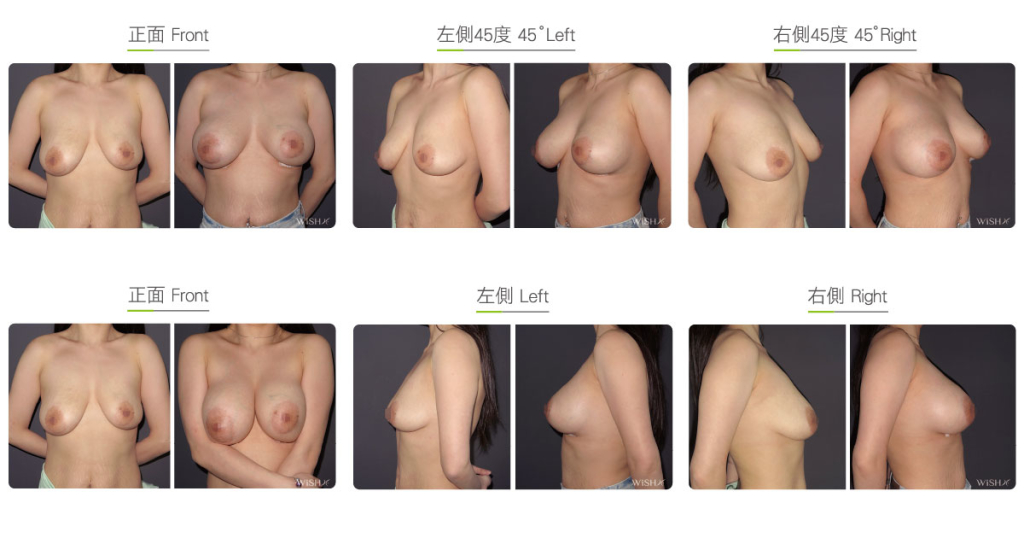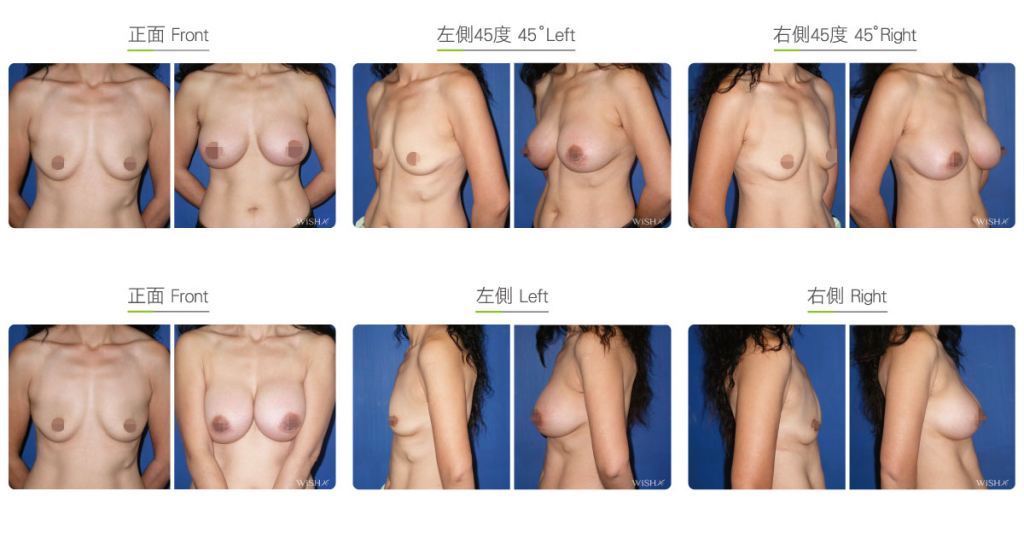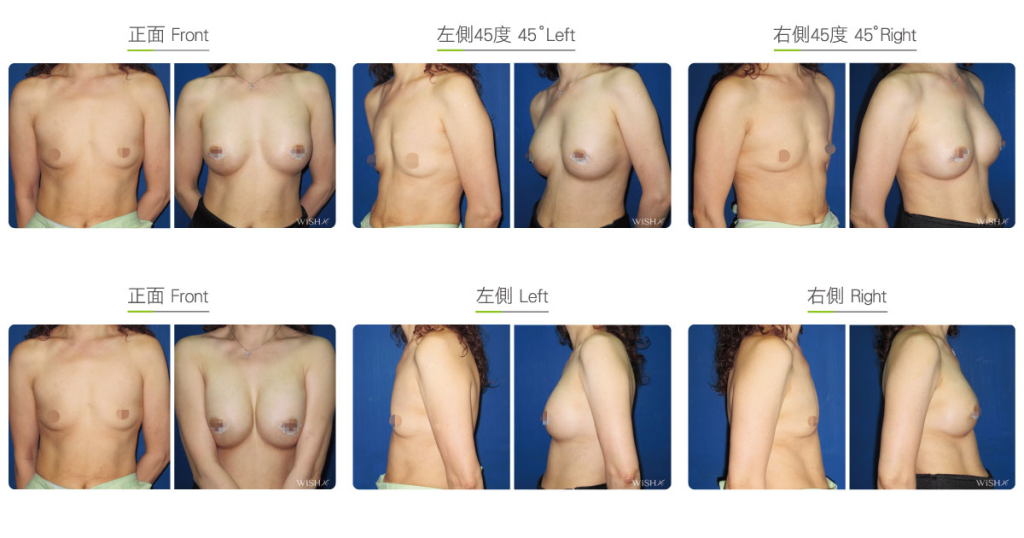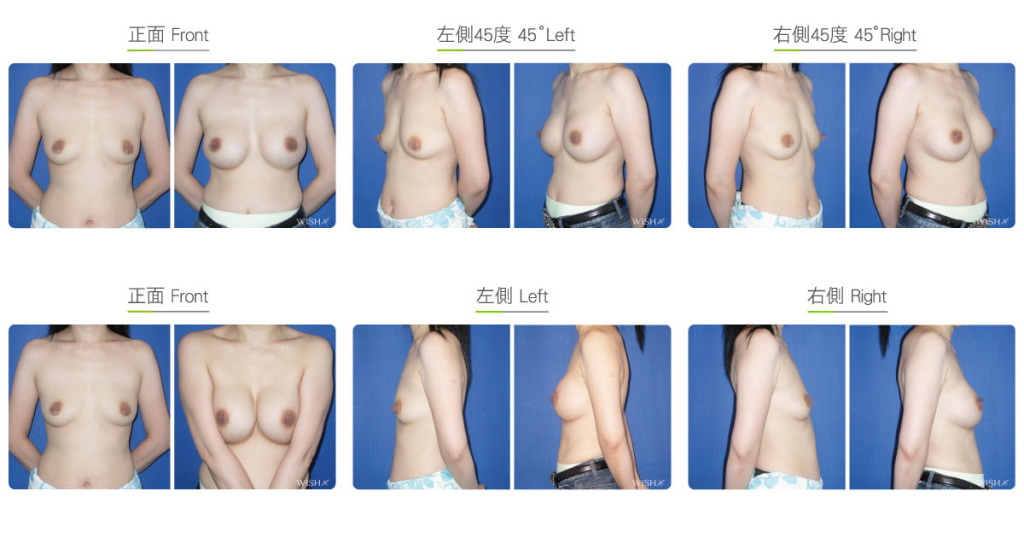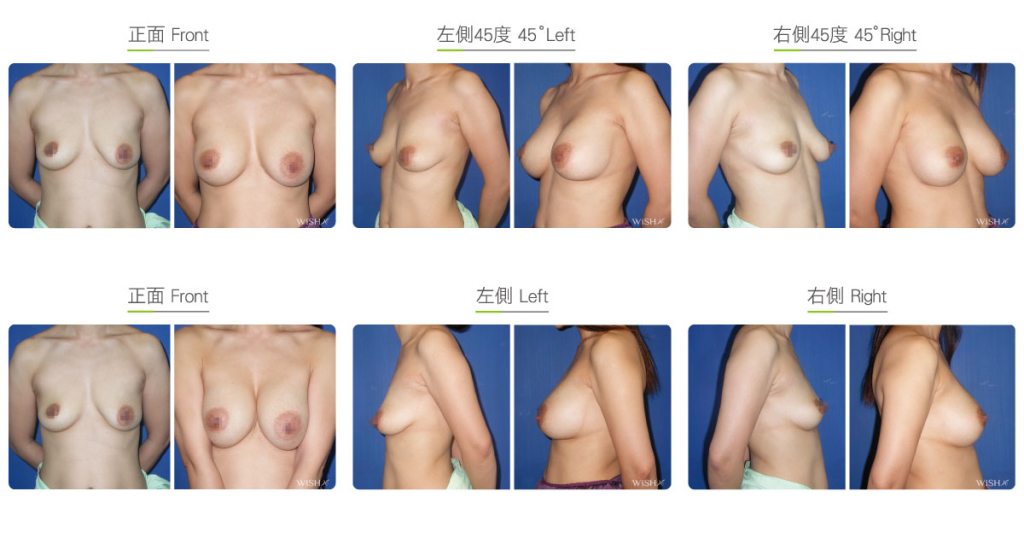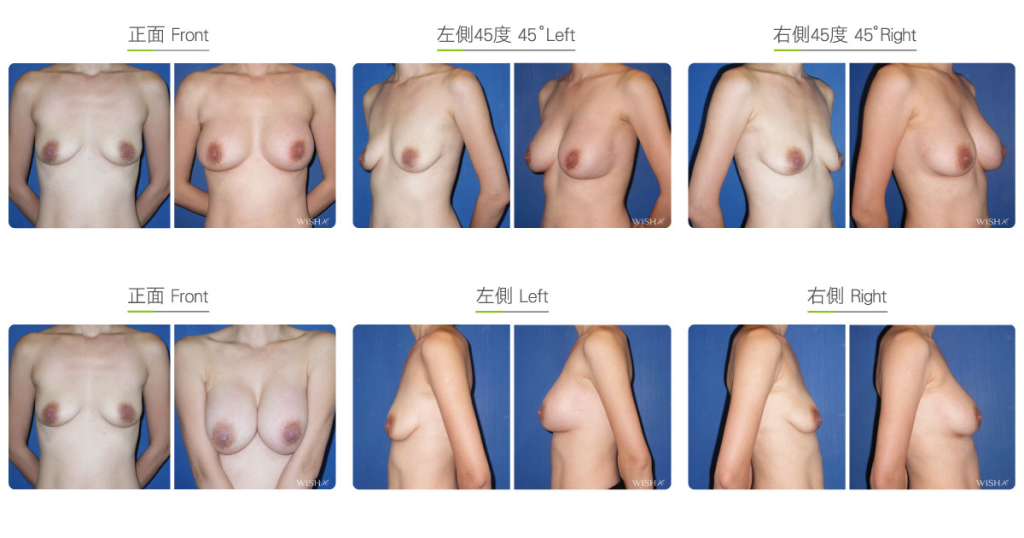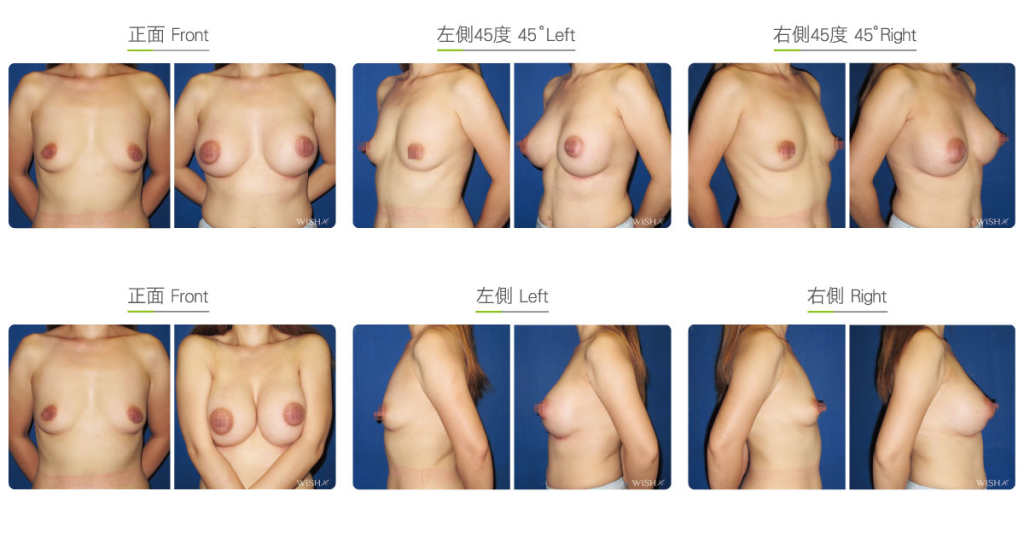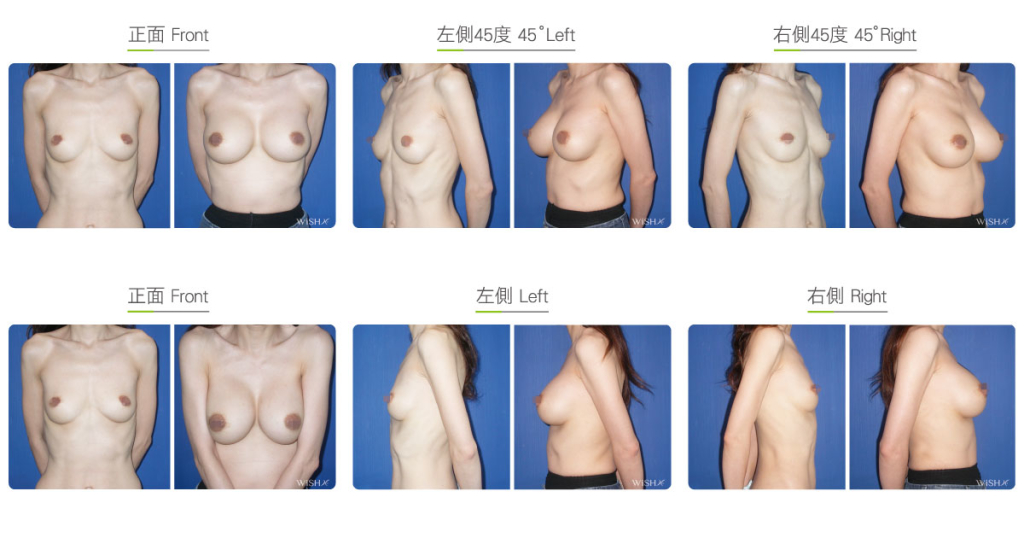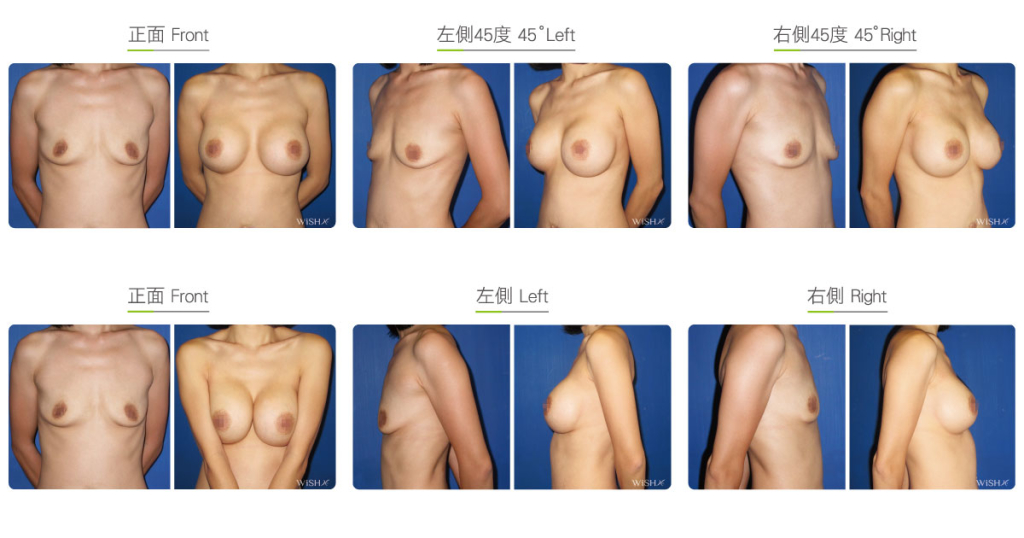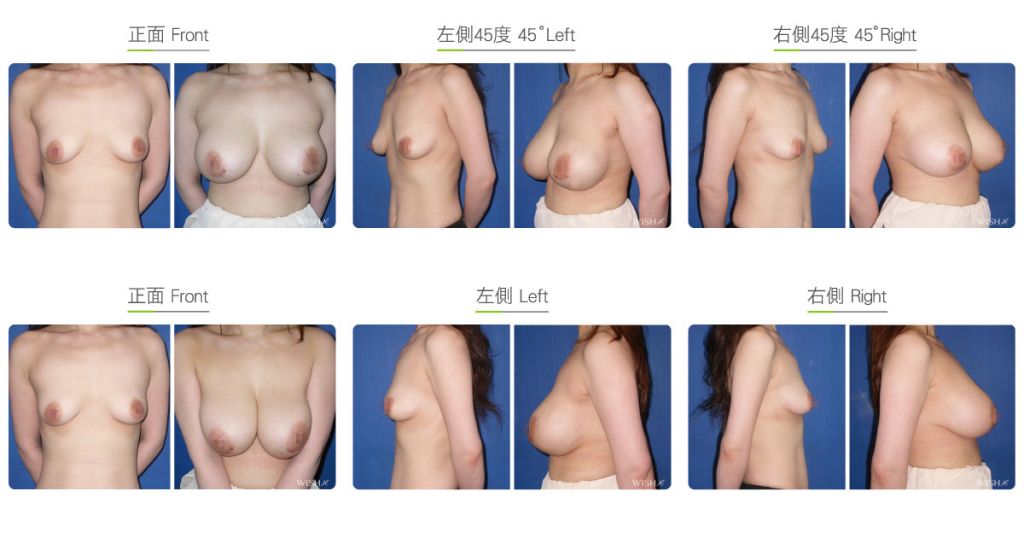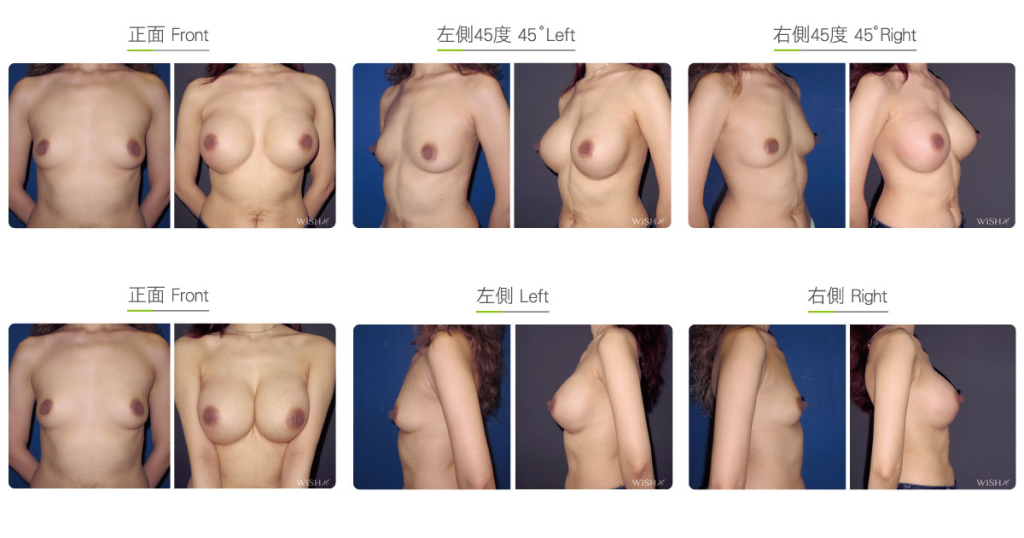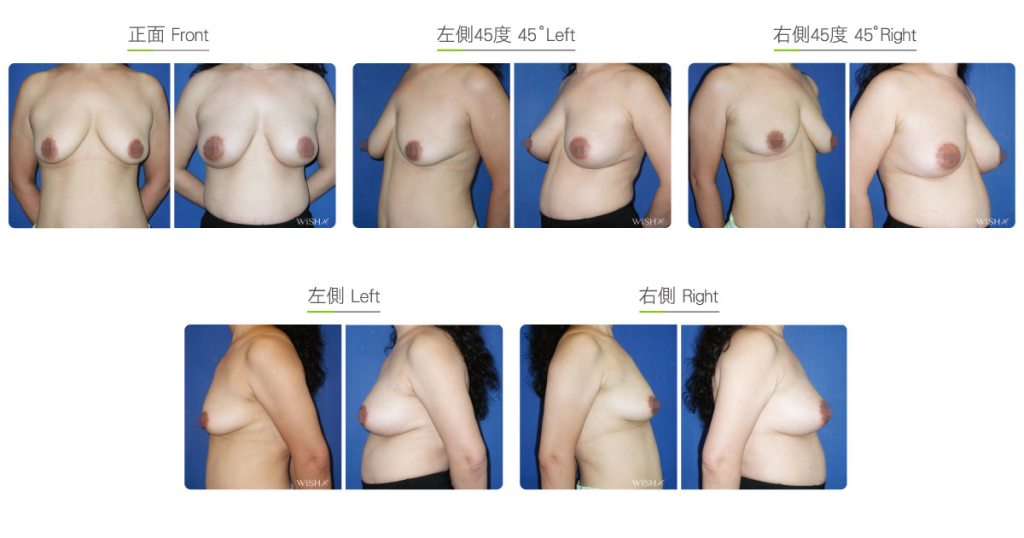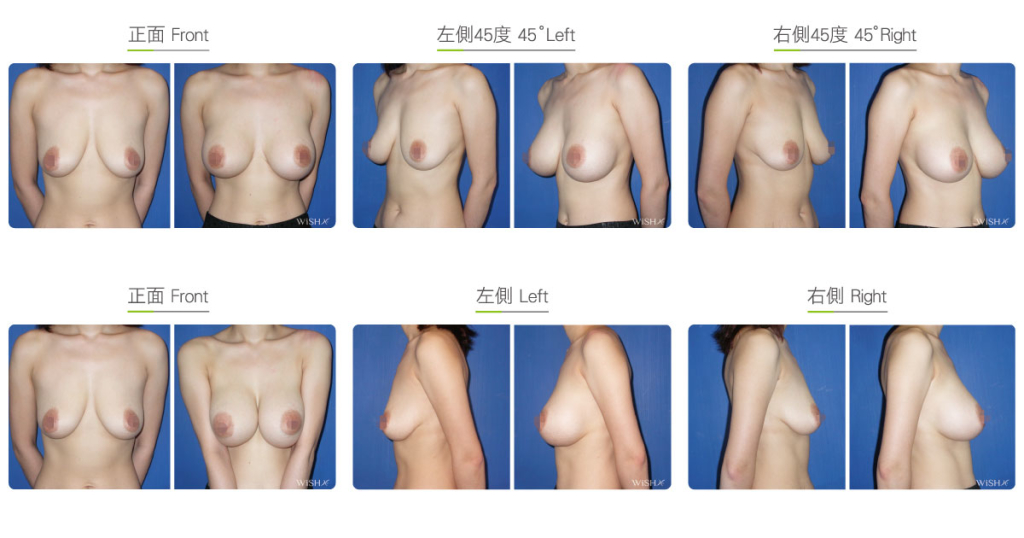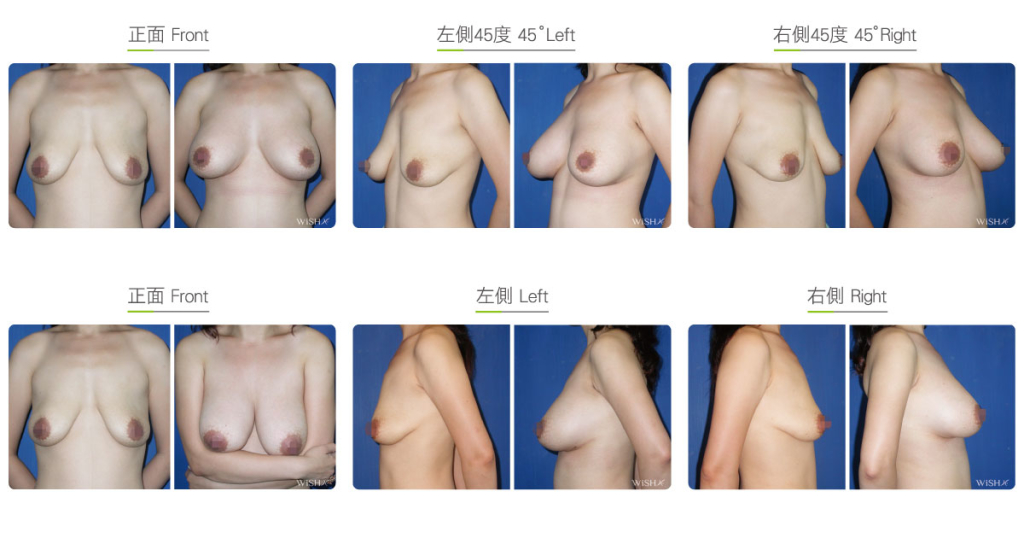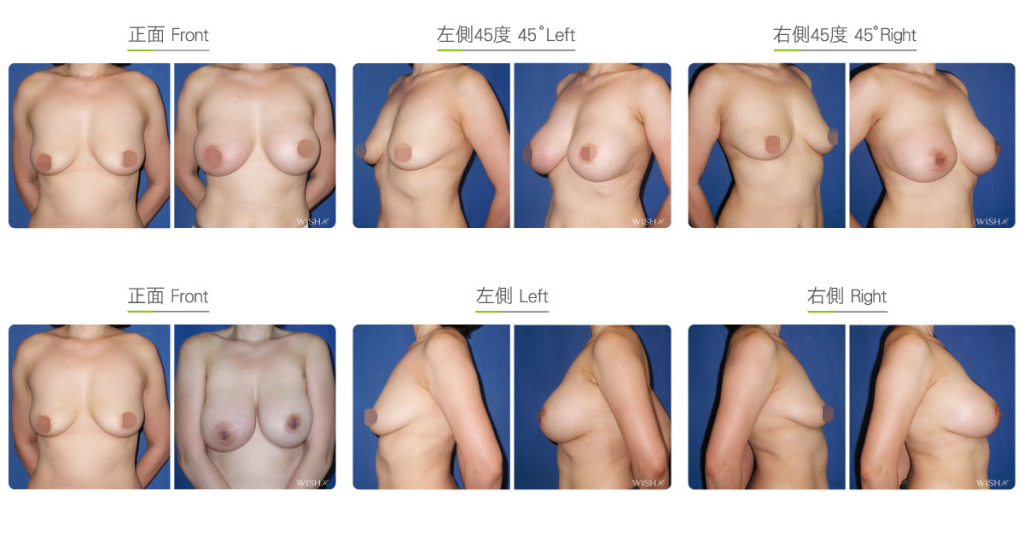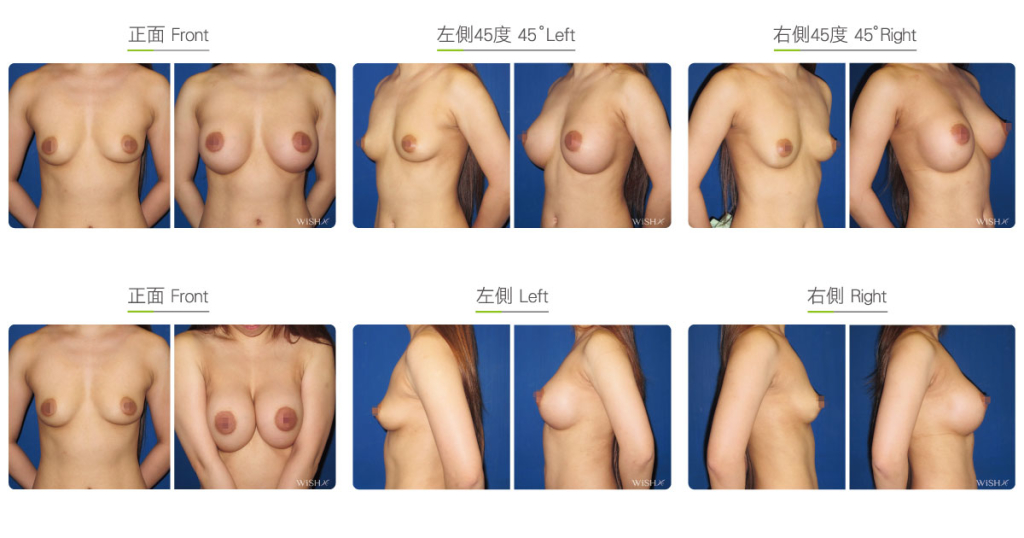Augmentation Mammoplasty
For patients with mild to moderate ptosis or those with a flat chest suffering from postpartum breast atrophy, regular endoscopic augmentation procedures can be used for the expansion of breast tissue and correction of saggy appearance. The procedure uses implants to support hollow or flat breast tissue and restore skin elasticity. Patients can also choose from transaxillary, periareolar, or inframammary incision. Postoperative care and instructions are the same as those for ordinary breast augmentation surgeries. The following are some special considerations in using augmentation mammoplasty to correct breast ptosis:
- Implant size should be based on the degree of breast ptosis and patient requirements and would usually be larger than that for ordinary augmentation mammoplasty.
- Implant placement site is dependent on individual skin conditions; however, the preferred position is the subfascial layer closer to the mammary gland to prevent the breasts from acquiring a “double bubble” or “Snoopy’s head” appearance.
- Excessive dissection for the surgical space should be avoided to prevent the postoperative breast skin from becoming too loose.
- Patients with more loose breast may choose textured implants because they may help stabilizing the shape and avoid postoperative massage that makes the skin looser.
- Patients with severe ptosis should consider the placement of teardrop implants via inframammary incision to correct the problem.
- Those who choose to go with periareolar incision may also undergo combined mastopexy for a more thorough improvement.
Surgical conditions
Duration
0hr
- Type of anesthesia: General anesthesia
- Type of incision: Transaxillary, periareolar, or inframammary incision
- Recovery: Within 2–3 days
- Removal of stitches: 7–10 days
General instructions
No food and water on the day of surgery
0hr
- Frequent stretching should be performed for 1 month postoperatively to prevent axillary scar adhesion.
- Tasks and exercises that require excessive arm strength should be avoided, and underwired or push-up bras should not be worn for 3 months postoperatively.
- Smoking and consumption of collagen or vitamin C should be avoided for 3 months postoperatively to prevent the formation of capsules.
- Breast massage should be performed for 3–6 months postoperatively (not needed for textured or teardrop implants)
Ideal candidates
- Those with grade 1–3 breast ptosis
- Those with natural ptosis due to aging
- Those with obvious postpartum breast atrophy or ptosis
- Those with loss of breast tissues due to rapid weight loss
Possible complications
- Capsular contracture (10%–15%)
- Uneven breast height
- Double bubble
- Implant displacement
- Scar adhesion (underarms)
- Implant leakage or rupture
- Insensitive or oversensitive nipples (temporary)
Surgical advantages
-
Rapid and efficient improvement of ptotic breasts.
-
Integrated effects of breast augmentation and shape adjustment.
-
Stable and sustainable results.
-
Able to delay further ptosis; both preventive and therapeutic effects
Surgical drawbacks
-
Patients have less freedom in terms of implant size because the decision is dependent on correcting ptosis.
-
Breast size may need to be larger than expected to correct breast atrophy.
-
Too large implants may also result in premature breast ptosis.
-
Postoperative massage may result in the relapse of skin sagging
Possible procedures in conjunction
Before & After
These photographs represent typical results, but not everyone who undergoes plastic surgery will achieve the same.

